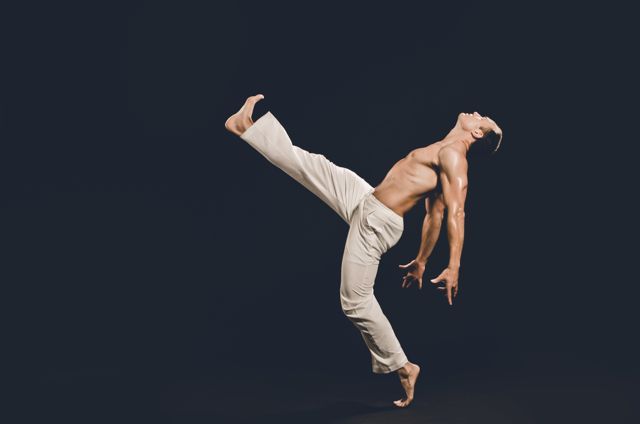Dance Trainer Q&A – Shoulder Shenanigans

Welcome to Dance Trainer Q&A. Where dance and fitness come together. If you have general fitness/workout questions, or fitness related to dancing, this is the place for you. Questions will be answered and posted every week.
Q: “Hi Nick. Plain and simple, the shoulders are very important, highly mobile, but easy to abuse and damage. It seems like there is a great confusion concerning the right exercises, and the correct form for these. Which exercises are helpful for good form, solid connection, and even safe aerials? Thanks!”
-J
A: Although known as a stable joint, the shoulders (along with the knees and lower back) are the most prone to injury. Both dancers and fitness fanatics constantly complain of shoulder tweaks and injuries.
First, let’s look at the function of the shoulder. The deltoid (shoulder) is a three headed muscle group comprised of the anterior (front), medial (side) and posterior (back) deltoid. It’s primary function is to lift and rotate the arm. The shoulder also plays a major supporting role for the surrounding muscles and compound movements. Most shoulder workouts include presses and raises (front, lateral and rear).
Good posture is fairly universal. Having the shoulders rolled back and relaxed down (not pulled back) will create good posture for both dance and fitness. When lifting weights, pick a weight that won’t change your posture or create any sort of lean or pitching.
Keep in mind that other exercises also work the shoulders. To design a balanced workout it’s important to realize how the shoulders are used in all the exercises. Example: The bench press works the front of the deltoids. Another example: Lat pulldowns or pull-ups work the rear delts. Having a weekly routine that balances the stress on the 3 heads of the deltoids equally is key to healthy shoulders. If one area of the delts becomes overdeveloped, focus on building up the others.
Because the shoulder is a ball-and-socket joint, the rotator cuff is the most vulnerable to injury. There are exercises to help with prevention and recovery. Hold a light weight and bend the elbow at a 90 degree angle. With the first exercise, start with the weight across the stomach. Rotate from the shoulder and rotate the weight away from the body (keeping the upper arm by your side). With the second exercise, hold your arm out to the side, arm bent at a 90 degree angle. Start with the forearm parallel to the ground. Rotate the shoulder to send the weight up to the ceiling and back down (keeping the upper arm parallel with the floor).
Partner dancing uses repetitive motions that can create imbalances and injuries over time if not kept in check. Lindy Hop and Balboa are dances that one arm is constantly doing a row motion while the other arm is constantly catching or holding the partner. Aerials are repetitive motions that focus more on one side of the body than the other. Flexibility training and workouts that help correct these imbalances will help. Core and total body workouts are also great to help with this. Most aerials use both press and raising motions in the shoulders. For followers it’s often a pressing down motion. Developing a strong back and stable core will also help take stress off of the shoulders. Also, use your legs! Power in aerials comes from the legs and a solid core.
Must of the connection with partner dancing is actually done with the back muscles. Too much emphasis of the shoulders leads to poor connection and a chance for injury. Keep those shoulders rolled back and down in a nice relaxed manner.
Beware overtraining. It’s important to give the shoulders a rest from a workout or aerial training. It usually takes a good 3 days to fully recover. Foam rolling and stretching can help aid in recovery and maintenance.
Send your questions to nick@jitterblastfitness.com





